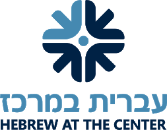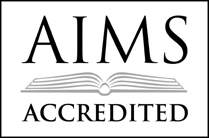Immersive Learning Week Launches with Explorations of Digital Game Design, Law, and Biblical Art
December 14, 2017 by
Our first Immersive Learning Week had sixth graders doing deep dives into digital game design, the law, and biblical art. Each group learned foundations related to their subject and broadened their understanding through field trips, guest speakers, creative exploration and design, and reflection. The program concluded with an Immersive Learning Week Showcase in which the students shared their learning with each other. Immersive Learning Week is a week between trimesters. Guided by instructors, students work in small groups and engage in concentrated, absorbing, and experiential learning about topics of study shaped by their interests.
Digital Game Design
Students learned elements of coding by designing a variety of digital games and then using what they learned to design and execute original digital game designs. Using the Scratch block computer language, the students explored and developed the coding that is used to create games like Pong, maze games like Pac-Man, and scroller games like Galactica. They then merged these elements to design their own original games. Throughout, the students learned to grapple, collaborate, persevere, experiment, problem-solve, and innovate. Working at both our school and the Catylator Makerspace, the student programmers delved so deeply into their programming that their teachers, Lisa Schopf and Steve Morris (from Catylator) had to pull them away from their codes to take breaks. The shouts of elation when they figured out how to program part of their designs highlighted the ways that persevering through problem-solving can serve as a source of confidence and joy. Sixth grader Reut noted, “At first I thought that I could not be a video game designer. Once I tried and I learned, I understand that anyone can be anything. Although that is true, coding can be challenging. One of my challenges was making two things move at the same time while not going through the walls of the maze. It was hard, but I persevered, and in the end, I succeeded so I guess I am a video game designer.” We are grateful to Donte Falcone, a computer programmer who recently moved to the area from California, for his wonderful presentation on the work of professional game designers and for helping us to understand the many applications of gaming innovations in coding. He also shared that programmers need to use English writing skills and typically write handwritten plans for their games before they start coding on the computer. MILTON STEM Coordinator Michal Krupnik-Gottlieb added to the discussion about applications of game design in fields such as intelligence, aeronautics, and education.
Journeys of Justice
In Journeys of Justice, students learned about range of justice-related concepts, including Supreme Court history, state v. federal courts, civil v. criminal law, philosophies of punishment, and civil disobedience. They had a guest speaker from Legal Services Corporation who guided the students towards an understanding of the challenges of living in poverty. The students visited the Circuit Court of Montgomery County, where they had a behind-the-scenes tour of a courtroom and observed part of an armed robbery trial. The students also attended oral arguments at the Supreme Court in the case of Murphy v. Smith. The group then visited the National Museum of African American History and Culture, accompanied by an attorney from Tzedek DC and social justice fellow from Avodah Jewish Service Corps. Finally, the students explored copyright infringement cases involving pop music artists Sam Smith, Ed Sheeran, and Pharrell with MILTON parent and guest speaker, Sig Libowitz. The students closed the week by presenting their learning to their peers and beginning to reflect on the meaning of justice.
Biblical Art
The sixth graders’ exploration of Biblical art began with studying the principles of art, such as balance, emphasis, movement, proportion, and unity; and considering the techniques an artist uses to organize elements within a work of art, such as the rule of thirds and the golden ratio. Next, the students learned the sources in Bereshit Chapter 11 about the Tower of Babel and looked at Pieter Bruegel the Elder’s Tower of Babel, seeing which texts and midrashim he incorporated into his work. The second and third days were spent learning about sculpture from local artist Rena Fruchter, creating gesture drawings and crafting and painting sculptures of various Biblical characters such as Noah, Yonah, Sarah, Aharon, and others. On Thursday, the students visited the National Gallery of Art and analyzed some of Peter Paul Rubens’ most famous biblical works of art including Daniel in the Lion’s Den, looking at them through both an art interpretation lens and a Jewish text lens. Students also created their own art works throughout the week and connected them to the original Torah texts.






